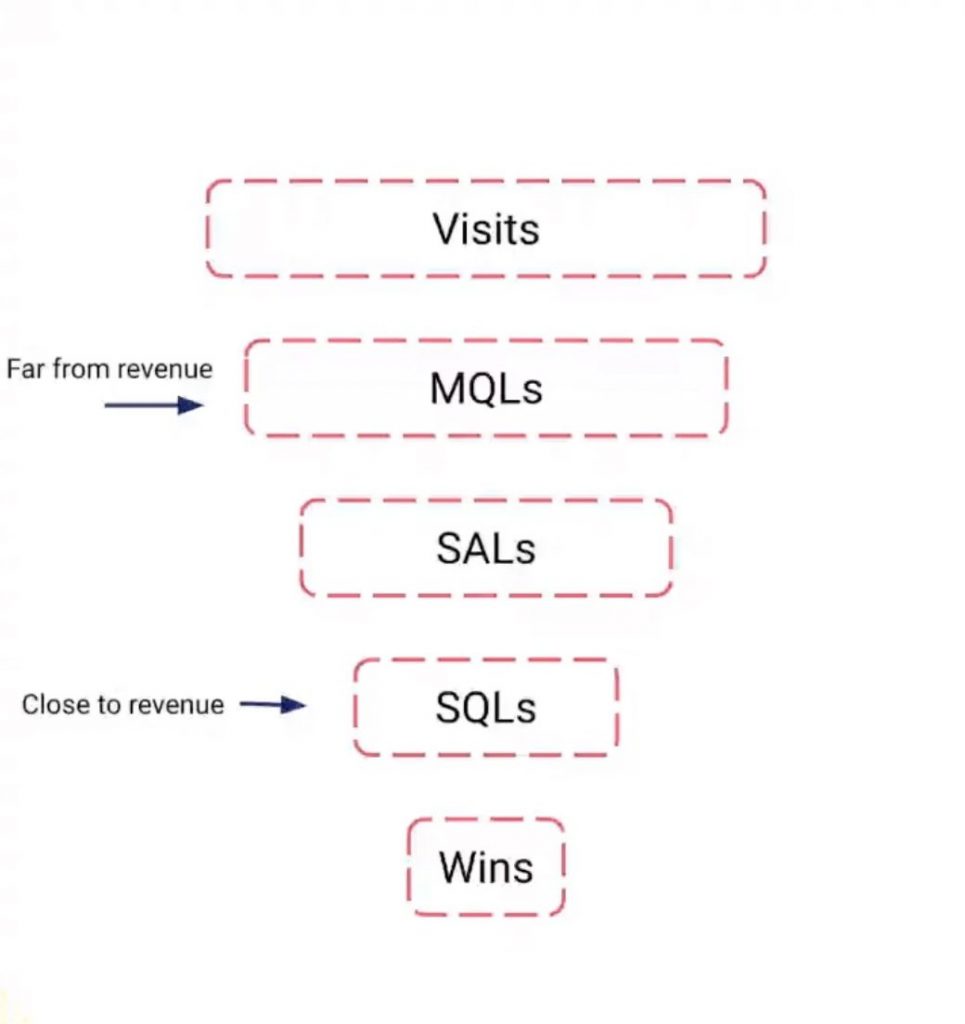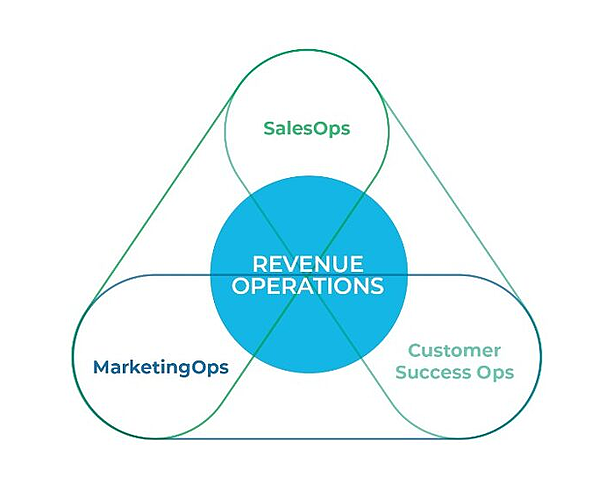While many professionals acknowledge the importance of sales and marketing alignment, it’s not always easy to achieve. In our 2022 Revenue Marketing Report, we found that sales and marketing alignment is a bit, well, meh.
More than half of the respondents (58%) rated their sales and marketing alignment as poor, fair, or good (as opposed to very good or excellent). Only 42% of marketers felt like their two teams cooperated effectively.
Certainly, the pandemic made alignment more difficult for many companies, but that doesn’t make it any less vital. So, how can you take your alignments from fair to fantastic?
In this post, we’ll share some of the keystone habits that we’ve used at Copper to foster great sales and marketing alignment, along with some additional tactics you can start using today.
1. Push marketing KPIs as far down-funnel as you can
Many marketing teams measure themselves off the strength of their MQLs, but this strategy doesn’t always lead to good alignment between sales and marketing. For B2B the truth is that traffic matters less than driving opportunities for your sales team to close business. As a result, while you need to measure MQLs, you should consider SQLs or opportunities your north star metric. That’s the classic MQL vs SQL debate.

Marketers may push back on the approach at first, arguing that they can’t control what sales does with their leads. However, if the marketing team is only accountable for MQLs that they “throw over the wall,” and washes their hands of downstream opportunities, trust between the two teams will be eroded.
And quality leads build a quality pipeline. By making SQLs your main KPI, you’re forced to look at the quality of your MQLs, not the quantity. You’ll spend more time thinking about reaching your intended audience and their needs, rather than adopting a pray-and-spray approach, or doing keyword searches to see what’s ranking—instead of what’s actually important—for your audience.
You’ll also spend more time thinking about conversion rates and lead nurturing, leading to a stronger and closer relationship with your sales team as you start to realize how intertwined the two of you really are.
2. Watch for win rates that are too high
If your win rates from an opportunity to a closed deal are north of 50%, sales are likely qualifying opportunities too far into the sales process. In other words, they’re not creating an opportunity until they’re pretty sure that they’re going to close that opportunity.

Not only does this approach make forecasting more difficult, but your sales team could also be leaving money on the table. If you’re only focusing on high-fit, high-intent prospects, then you’re missing out on those who could be a great fit but might require a little more nurturing before they are ready to commit.
Perhaps most importantly, you’re not closing the feedback loop that enables marketing to improve lead generation. As data-driven marketers, knowing the deals that are lost is just as important as knowing the deals that are won, and if your win rate is too high, you’re only getting half the information.
To get a more accurate picture, I prefer for sales to create the opportunity at the moment a demonstration is set. At that time, it’s truly qualified… From here, a win rate of 35% is a good target to shoot for.
3. Explore a revenue operations strategy
Many businesses separate their operations teams between marketing and sales. On the surface it makes sense, but the split can create a further siloing of the departments and even break key automation.

If different teams drive marketing emails and sales emails, your prospect may not always experience consistency. Add in customer success and all of a sudden you have three different groups and potentially three different systems trying to communicate with the same person.
An organization I once worked for had five different email automation systems in use. It disrupts the customer journey and, frankly, annoys people.
The alternative? A centralized revenue operations strategy, one that serves all teams equally. Businesses with aligned revenue support grow faster and are more profitable. Determining how resourcing is handled and who this team should report to can be a challenge, but even just creating a cross-functional department and exploring the possibilities around this is a worthwhile start.
4. Recognize that the teams are in service to each other
We tend to prioritize actions that are measurable and specific. But sometimes, the reality is we just need to treat each other as human beings. This is particularly true when it comes to how the sales and marketing teams view each other.
As a CMO, my team and I are in service to our sales team. This leads to a culture of respect, cooperation, and reciprocation. Rather than being the marketer who thinks poorly of sales because they don’t call your leads, become a bigger thinker. Become the marketer who’s focused on creating an indisputably great pipeline.
In turn, salespeople can realize that marketers can’t guess what a good lead looks like.
The sales team’s purpose is to close business and to do that they have to deliver crisp, unbiased, thoughtful data back to marketing.
It’s really hard to be a salesperson. They have to suffer through a lot of rejection before they meet success, which can make delivering objective feedback to marketing challenging. As a marketer, I need to know what’s bad so I can deliver less of it, but I also need to know what’s good so I can deliver more of it. So for alignment—and peace—both teams need to realize that they’re in service to each other.
5. Lead with empathy and heart
I have deep empathy for sales professionals—I wouldn’t last a day on the job. I would be so stressed about hitting quota I’d end up curled up in a ball under my desk. It’s a really hard job, especially in this day and age, where there are dozens and sometimes hundreds of choices for prospective buyers. They’re asked to deliver when the product isn’t up to snuff, when the market isn’t there, or when we’re in the middle of a pandemic.

In turn, good marketers can feel just as stressed about their quotas. I lose sleep when I don’t hit pipeline targets. I tear my hair out when I can’t figure out why we’re not hitting SQL counts in a month where they should be up.
Both marketers and salespeople need to operate from a place of understanding, where they know the challenges the other faces and empathize with them. Both teams have to understand that each one is trying to succeed in their own ways. Starting with that mindset is a good foundation for alignment.
Tactical ways to foster sales & marketing alignment
While strategic habits need to be built up over time for long-term success, there are also tactical actions you can start implementing immediately to improve alignment. Here are a few that we’ve found useful that you can modify and use for your sales and marketing teams:
1. Weekly pipeline review with sales and marketing leadership
At Copper, we have a weekly pipeline review with sales and marketing leaders that goes right through the funnel, from top to bottom.
So we start by looking at MQLs before reviewing the opportunities, the amount of pipeline that we’ve generated to date, and what our forecast is for the end of the month. Then we go into sales execution, such as deals closed and average deal size.
Once we’ve done that, we look at all of the initiatives that we have in place to improve marketing and sales execution/alignment and pipeline generation. For example, this quarter we overhauled our lead recycling program, and rewrote our email nurture for leads who are recycled after 90 days. Our next meeting will review how that’s working. Likewise, if the sales team is doing some interesting new training, they’ll report on that too.
2. Win/loss reviews with full sales and marketing teams
In a win/loss review, your reps go through their top three wins and their top three losses. Each rep will talk about the customer use case as well as what won or lost the deal. This doesn’t have to happen weekly; it can be monthly, every other month, or even quarterly, depending on how many transactions you do in a typical month.
By having the full sales and marketing teams in attendance, each side can learn so much about what works and what doesn’t. You get deep insights into your key buying personas and your target audience, into the things that make them tick and the things they want to hear.
3. Sales and marketing buddy system with an open-ended mandate
We use a buddy system at Copper where we take one salesperson and one marketer and pair them up. Then, we tell them to go and make sales and marketing better together. There are no strict guidelines, no one tells them what to do—just an open-ended mandate to improve things. It’s up to them to determine what to do and how to go about it.
Usually, we’ve found that the salesperson will talk with the marketer about a specific problem that they’re experiencing during the sale or in closing. Then the two of them will work together to come up with a solution. It’s a nice way to get both sides focused on one particular aspect of the marketing funnel.
For example, we had a sales team member buddy up with our product marketing manager. The salesperson was talking through some of the challenges he was facing relating to competitive intelligence. Now, we’re in the CRM business, which has to be one of the most competitive tools to sell, so it’s not like we hadn’t done a lot of competitive landscaping.
But, when these two people got together, a much deeper level of understanding emerged of what competitor platforms prospects were looking at and how they perceived their relative strengths and weaknesses. As a result, the product marketing manager was able to develop a simple one-sheet battle card specific to the exact competitive objections that were coming up on the calls.
While it should be an open-ended mandate, bear in mind there still has to be a reasonable scope to the project. It’s not going to work if your sales and marketing duo decide they want to overhaul your marketing automation platform—that’s just too great of a scope that affects too many people.
Where the sales and marketing buddy system shines is dealing with specific challenges that one team is facing and figuring out how both teams can help overcome them.
4. Joint sales and marketing deck for upper management
When you’re presenting to upper management, do your sales and marketing piece together, to automatically help you align on your overall objectives. It’s completely untenable to go into a meeting with upper management and say that you blew the doors off of your MQL targets, and then say you missed your sales targets by 50%.
It really puts your work into perspective. If you’re going into a meeting thinking that everything is going amazingly well yet nobody is actually generating any revenue for the organization, well, you’re going to sound very dumb.
By preparing those decks in advance as a cohesive unit, your messages will be aligned and you’ll find it easier to complete that feedback loop.
5. Seat changes or call recordings
When I was at Quandl we used to “hot desk,” and we always made a point of sitting close to sales. When you can listen to a salesperson on a call, it’s pretty amazing to hear what happens. Even though you can only hear one side of the conversation, you can still pick up so much just by osmosis.
Few of us may be working in person right now, and even if you are it might not be possible to sit alongside sales. However, if you use a system like Gong, then anyone can access recordings of sales calls on demand.
Every once in a while I just stick my headphones in and listen to a couple of calls on 2X speed. We have an internal Slack channel where people recommend Gong calls for marketers and others to listen to because they’re so compelling. By doing this, you’ll get lots of insights into your customers, their buying behavior, their needs, and their pain points.
Final thoughts
As we saw in our Revenue Marketing Report, sales and marketing alignment is still a significant challenge. However, it is worthwhile; teams that cooperate effectively are more likely to see revenue growth.
By putting key habits into practice, such as changing the way you measure success and encouraging both teams to act in service of the other, you can foster a healthy spirit of cooperation between the two teams.
Then, by operating at a tactical level and promoting alignment through regular meetings and combined initiatives, you’ll soon be enjoying the benefits of strong sales and marketing alignment.
Watch Carrie Shaw’s & Katheriin Liibert’s “Aligning Sales & Marketing: Strategies for Revenue Growth” session from Revenue Marketing Bootcamp 2021 for more tips and insights:



